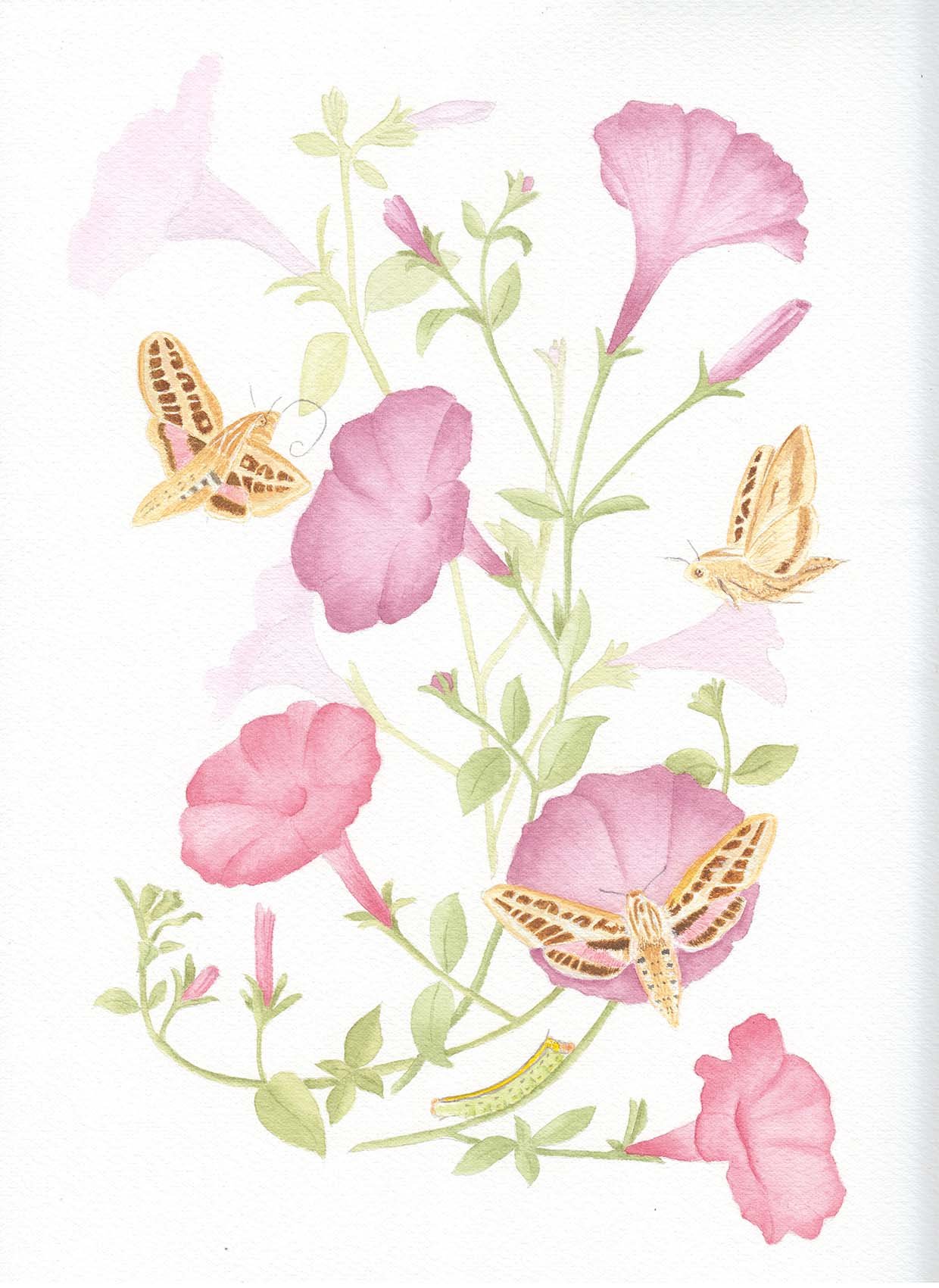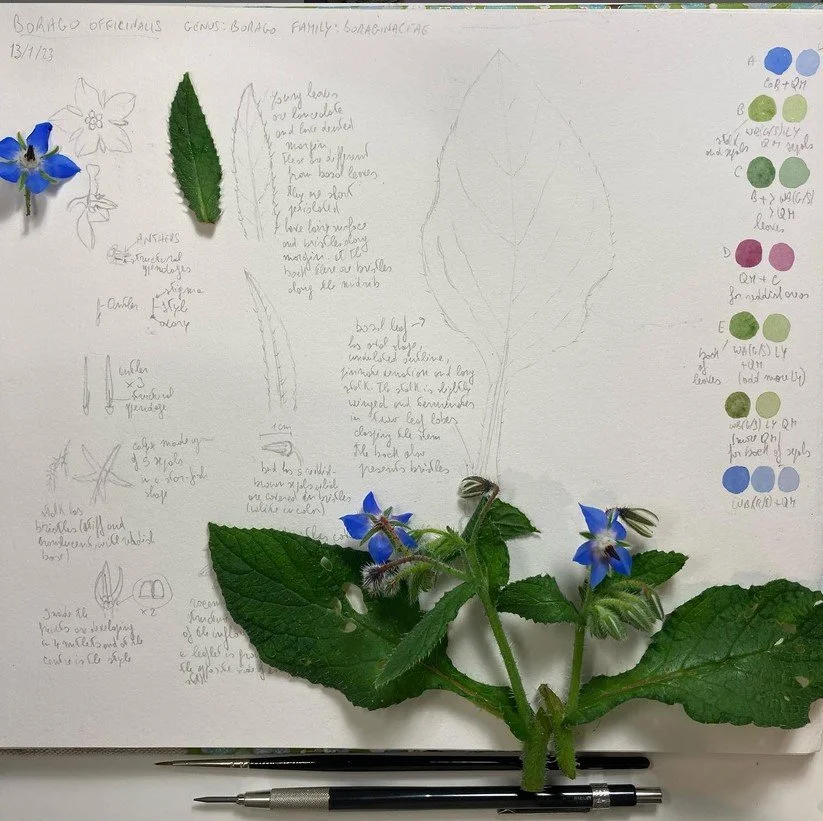Introduction
Botanical painting is a form of art that depicts plants, flowers and other botanical subjects. It can be done in various mediums such as watercolor or oil paint on canvas or paper. Botanical art is often used as an educational tool to help people learn about plants, their identification, habitats and uses.
Botanical artists are known for their attention to detail when it comes to depicting plants accurately in their paintings. Some may even use scientific techniques such as microscopy or photography in order to get the most accurate representation possible!
Whether you're a seasoned artist or just starting out, I’ve listed some tips can help you tackle botanical illustrations.
Tip 1: Select the Right Supplies
Select the Right Supplies
Paints: The best botanical paints are made with natural ingredients and have a high pigment load, which means they're more concentrated and less likely to fade over time than other brands.Brands like Gamblin, Daniel Smith and Winsor & Newton are excellent choices for botanical painting because they offer an array of colors that are richly pigmented and easy to use when mixing with each other or watercolor washes.
Brushes: You'll need a variety of brush sizes for different tasks--from large ones for backgrounds (like bristle brushes) down to smaller ones for details (such as squirrel hair).
I prefer sable brushes because they're soft and hold a lot of water; my favorites Winsor & Newton Series 7, both normal ans miniature.
Paper: Botanical paintings should be done on smooth, quality paper such as Fabriano Artistico Extra White 140lb Hot Pressed Watercolor Paper, or Arches Hot Pressed paper. My advise is for smooth paper so that the finer details will be sharp.
Palette: Although the plastic palettes are more affordable, I would advise you to purchase a ceramic palette if you can. Mixing color on a ceramic palette is much better, the color doesn’t form weird little pools and it doesn’t stain, in fact it’s very easy to clean.
Tip 2: Practice Basic Painting Techniques
Before jumping into a botanical painting, it's important to practice basic painting techniques. This includes things like wet-on-wet and wet-on-dry techniques, blending colors, and creating smooth washes. Mastering these techniques will help you create a strong foundation for your botanical paintings.
If you need help with these techniques you can check out my class: Watercolor Basic Techniques For The Absolute Beginner. Or you can find these and other tips and lessons on my Patreon Channel.
Tip 3: Understand the Structure of Plants
The next step is to analyze the structure of your plant, which will help you draw it accurately.
study page for Borrage plant
First, sketch out the overall shape of your subject. This is called a "contour drawing" and can be done quickly with a pencil or pen on paper or digitally in Photoshop or another image editing program.
Next, focus on individual parts of the plant and begin to draw them separately from one another. For example, if you are painting an apple tree with apples hanging off branches, start with each branch individually before moving onto other parts like leaves or flowers (if there are any).
You can find a video detailing how I approach a Borage Study Page on my Patreon channel
Tip 4: Use Reference Materials
Use Reference Materials
The best way to learn about botanical painting is by studying the work of other artists. You can do this in a number of ways:
Books - There are many excellent books on botanical art, with more being published every year. I recommend starting with The Botanical Artist's Handbook by Patricia Harris (2016), which has been called "the bible" of botanical art by many artists. Other good books include Botanical Illustration: A Practical Guide by David J. Mabberley (2011), Botanical Art: An Introduction by Laura Polkus (2014), and Botanical Drawing: A Beginner's Guide by Trevor Braybrooks (2012). If you're interested in learning more about the history behind botanical illustration then check out The History Of Botanical Illustration by Brian Mathewson-Smith (2015).
Photos - If you don't have access to any books then there are plenty of online resources available for free! One great resource is the Biodiversity Heritage Library where you can find thousands of pictures of plants, insects and birds, and Flicker Commons where users upload photos from public domain sources such as museums around the world so that anyone can use them for whatever purpose they wish without having worry about copyright infringement issues.
Tip 5: Pay Attention to Detail
Botanical painting is all about capturing the details of a plant, from the texture of the leaves to the intricate patterns on the petals. Take your time and pay close attention to these details as you work. Use a fine brush to add small details and make sure you're capturing the unique characteristics of the plant you're painting. Use magnifying glasses if necessary.
Tip 6: Experiment with Different Styles
If you're new to botanical painting, it's a good idea to try out a few different styles before settling on one. Some artists prefer realism while others find abstract or impressionism more appealing. Try out each of these approaches and see which one speaks most strongly to you as an artist!
Tip 7: Take Your Time
The last tip I have for you is to take your time. As you are painting, it's easy to get caught up in the moment and want to rush through things so that you can finish quickly, believe me, I’ve been there!
However, this will only lead to poor quality work that doesn't look as good as it could have if you had taken more care with the details. So instead of rushing through each step of your painting process, try focusing on making sure everything looks its best before moving onto another part of your piece!
Conclusion
Now that you've learned about the basics of botanical painting, it's time to get started.
One last but certainly not least tip is: practice, practice, practice! Like any skill, botanical painting takes time and dedication to master. Make time to paint regularly and don't be too hard on yourself if a painting doesn't turn out as planned. Use each painting as an opportunity to learn and grow as an artist.
If you're feeling inspired to try your hand at botanical painting, I encourage you to give it a go! Remember to take your time, practice basic techniques, and pay attention to the details. And don't forget to experiment with color and have fun with it!
If you'd like to see more of my botanical paintings and illustrations, be sure to check out my print shop. I have a variety of prints and products featuring my artwork, from greeting cards to wall art. You can also check out my Skillshare classes on watercolor painting HERE.
And if you have any questions or would like to share your own botanical paintings, feel free to leave a comment below. Happy painting!





